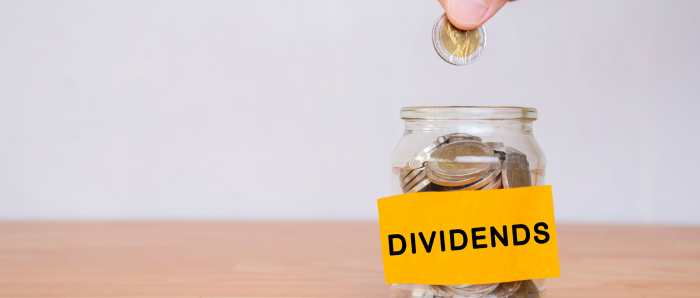What is Dividend Payout Ratio?
Article last updated: November 6, 2023

One essential metric for dividend investors to consider is the dividend payout ratio. This ratio provides valuable insights into a company's dividend sustainability and its approach to returning profits to shareholders. In this article, we'll discuss the concept of the dividend payout ratio, how to calculate it, what constitutes a healthy ratio, and more.
What is a Dividend Payout Ratio?
The dividend payout ratio is a proportion of a company's earnings distributed as dividends to its shareholders. It quantifies the percentage of profits that a company chooses to return to its investors in the form of dividends, reflecting its commitment to rewarding shareholders. A low payout ratio suggests that a company retains a significant portion of its earnings for reinvestment or future growth, while a high ratio indicates a more substantial portion of earnings is being distributed to shareholders.
For example, a company with 60% dividend payout ratio means that of all net profit the business earned it will pay 60% of the amount to the shareholders as dividends while retaining the rest (40%) for reinvestment in the business.
How to Calculate a Dividend Payout Ratio?
Calculating the dividend payout ratio is straightforward. Simply divide the total annual dividend payments made by the company by its annual net earnings or profits. The resulting ratio is expressed as a percentage. The formula is as follows:

What is the Best Dividend Payout Ratio?
The ideal dividend payout ratio can vary depending on the industry, the company's growth stage, and its capital allocation strategy. However, some general guidelines can be applied:
A ratio in the range of 0-30% is considered low but can be acceptable for certain companies, especially those in growth phases. In such cases, it's essential to assess how the company utilizes the retained earnings for capital allocation, which should ultimately lead to future dividend growth. Many well-known investors even went against paying a dividend if the amount could be reinvested at a high return on capital employed.
A payout ratio around 30-50% is often considered healthy for dividend-paying companies. It strikes a good balance between returning dividends to shareholders and allocating capital to maintain competitiveness and support future growth.
A payout ratio exceeding 50% is quite high, and in such cases, investors should scrutinize whether it is sustainable over the long term. A high payout ratio may indicate that a company is prioritizing dividend payments at the expense of growth and reinvestment to maintain competitiveness.
And in the most extreme cases, the ratio above 100% is unsustainable as it means the dividend amount being paid out is higher than the earning from the company. Sooner or later, the company will have to reduce the dividend payment.
At the end of the day, it's crucial to consider the dividend payout ratio in the context of a company's overall financial health, capital allocation strategy, and growth prospect.
Is it Better to Have a Higher Dividend Payout Ratio?
While a higher dividend payout ratio may seem attractive to dividend investors, it's not necessarily better. As mentioned earlier, a too-high payout ratio can be a red flag, indicating a lack of growth opportunities or unsustainable dividend payments in the future. Companies need to strike a balance between rewarding shareholders and reinvesting in their businesses to ensure long-term success.
What is the Difference Between Dividend Yield and Payout Ratio?
Dividend yield and payout ratio are two distinct metrics used to evaluate dividend-paying companies. Dividend yield measures the annual dividend payment as a percentage of the stock's current market price, providing insight into the income generated from your investment.
On the other hand, the payout ratio quantifies the percentage of earnings paid out as dividends, reflecting the company's dividend policy and financial strategy.
Both metrics, when considered together, can help investors identify high-return, sustainable dividend-paying companies that align with their investment goals. While dividend yield focuses on income, the payout ratio sheds light on the company's commitment to dividend payments and financial health.